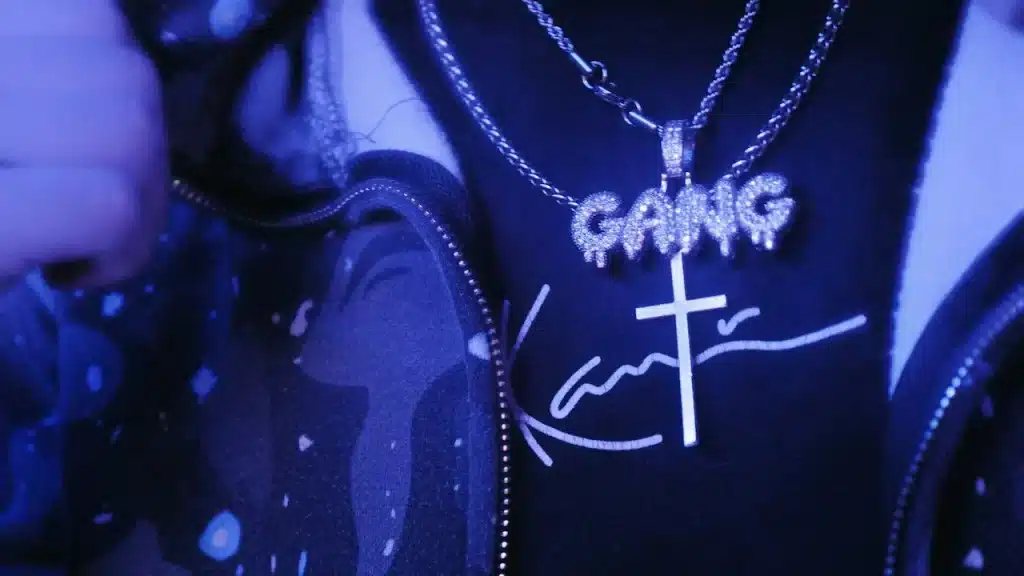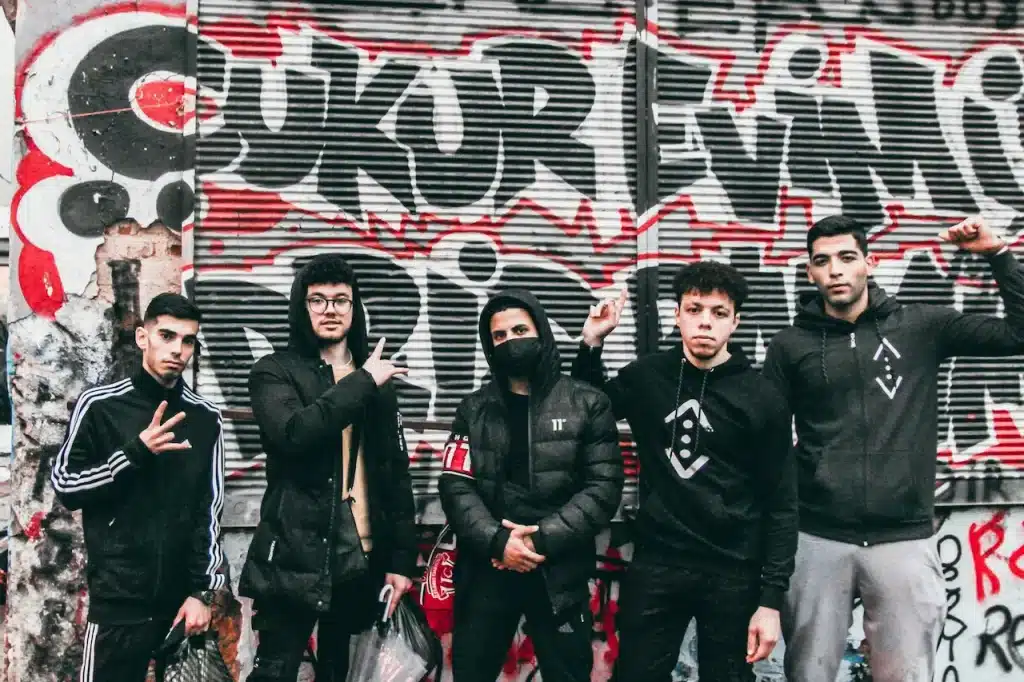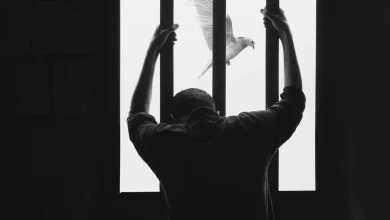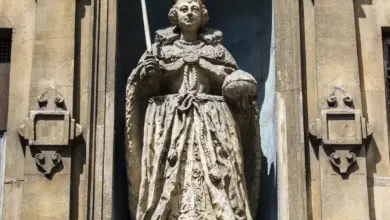South Central Los Angeles. This stretch of Los Angeles is just a few miles away from Beverly Hills, Hollywood and the glitz. It hides a very different reality. One where everyday life teeters at the edge of existence. The “hood” is less a neighbourhood than a constant battlefield. Respect is not worth the blood and bullets. Life is often measured by neighbourhoods and not miles.
The National Geographic Channel’s documentary Inside LA Gang Wars spans four horrifying months. In just four months, gang violence claimed the lives of more than 60 people. The film takes viewers inside this violent world, not through an outsider’s commentary but by letting them see it as the residents themselves see it. Funerals are filled with emotion. Kids as young as 11 are brandishing guns like they’re supposed to be there. There are also heartbreaking testimonies from those who have been caught in what appears to be an endless cycle of bloodshed.

A city of contrasts: Geography and pressure
Los Angeles is a vibrant city with many contrasts. In just 30 minutes, you can be on the beaches of Venice or Hollywood. In South Central, a region dominated by African-Americans and Latinos, waves of deindustrialisation have eroded opportunities for economic growth over the past few decades. Closed factories, poor schools, limited social services, and entrenched segregation have created hotbeds of despair and vulnerability–fertile ground for gang recruitment.
According to The Crips and Bloods of America, gangs emerged because youths who were struggling were excluded from youth groups like the Boy Scouts. They lost out on positive role models and support from their communities.
Understanding the geography of this area is key. Violence doesn’t happen at random. It’s not random.
A Documentary without Filters
Inside: LA Gang Wars is unique because it does not rely on experts to explain gang dynamics. Instead, gives cameras to members of the gang — two teens and four older members — who film video diaries that document their daily lives.
This raw access reveals an intimate world of street vigilance and facade-falling intimacy. The next day, the teen is attending a funeral. The pace of violence is mind-numbing. The lives of these people are not marked by landmarks but by funerals.
Child Abandoned
In one of the most disturbing scenes, 11-year-olds are seen handling guns with a casual familiarity. Before the innocence of childhood can begin, it is already gone.
Data from other L.A. reports, when drilled down deeper, show how trauma is a deep-seated issue. Children playing in the San Fernando Valley park could end up in the hospital with lead pellets in their heads because gang crossfire broke the peace. Tens of thousands of children suffer from PTSD, similar to that of combat veterans. They are plagued by nightmares, loud noises and the smell of gunfire.
Imagine growing up in a world where you start every day by asking yourself: Will it be bedtime before I go to sleep?
The Funeral As A Community Mirror
In Within: LA Gang Wars, one funeral, infused with anguish and sorrow, is brought to the forefront. These are not resilient goodbyes. These are fundamental breakdowns. Mourners are not just grieving for their loss, but also for the community that seems powerless to end the cycle of pain. There is a camaraderie to shared grief and a search for peace, as the Los Angeles Times described it in a poignant reflection:
“We try and find peace in the dope.” We are trying to find happiness and peace in gang violence. “But there is no peace in gang violence.”
The cycle continues.
Families that break, walls that divide
Geographically, South Central is not physically isolated, but culturally it’s confined. It is isolated from opportunities by highways and railroads. The historic housing segregation and the lack of investment in the area compounded this disconnection.
In this environment, many people view gangs as their family and not as a choice. A child’s first place of belonging may not be in schools or church, but in crews. They are drawn into the war of identity.
Gangs and History
This is important in the context of history. The 1960s civil rights struggle gave rise to gangs such as the Crips, Bloods, and others. They evolved into complex networks of identity, violence, and survival. In their feud, over 15,000 people have died.
These streets are not dominated by only African-Americans. The 18th Street Gang is a multiethnic gang founded in Rampart that spans the entire city. It is a multi-ethnic group with thousands of members that operates in many neighbourhoods. Each neighbourhood has its autonomy.
The gang culture is more than just turf. It’s also about power, dignity and survival. Every day is a map with contested identities and zones.
Human Voices Among the Chaos
A former gangster, who is now a youth worker, recalls:
“I’ve attended more funerals involving guns than I have graduations.”
Another told of being a witness to a shooting when he was a child, but doing nothing because he was frozen by shock. Still, lives echo his pain: a brother who was lost, hypervigilance and changed childhoods.
The voices of these people give a human face to the tragedy. They are not looking for sympathy. They want to be understood.

Beyond Arrests – Reform, Roots, and Rescue
In the 1980s, police used a lot of crackdowns, such as Operation Hammer, to sweep neighbourhoods with militarised raids. The arrests were thousands, but the violence continued to spread.
Some argue L.A.’s most powerful gangs emerge from its law enforcement, mirroring structures of loyalty and violence. Most agree that the real solution lies in community support and not just the police. Community members and activists urge investment in schools, playgrounds and counselling, not militarising the streets.
A Glimmer of Hope and Escape
Inside: LA Gang Wars captures glimpses of hope despite the despair. One gang member makes a miraculous escape, possibly with the help of Father Stan Bosch, who works tirelessly to save kids.
They are rare, but possible. These departures remind us that the current is not inevitable. Even in these war zones, there is still hope when someone cares.
Why These Stories Matter
- South Central streets are both prisons and escape routes.
- Let insiders talk, and not just comment. This will help to bridge the gap between us and “others”.
- Understand trauma and not only violence. Communities are not simply headlines, but ecosystems that have been shaped by tragedy.
- Understanding that youth violence is a social failure. Guns, gangs and other criminal activity are a result of a society’s silence.
Final Thoughts – Beyond the Frame
Inside: LA Gang Wars doesn’t offer tidy conclusions. It is a collection of fragments – snapshots of lives that skip between funerals and funerals.
What happens when death is a constant companion and grief is a routine in city blocks? Where childhood is a fragile privilege?
It says, above all else: These lives are not scenes. These are not scenes. They are stories. They are portals that expose us to geography, history, and inequality, but also the humanity of people standing together in pain.
South Central is much more than just a dot on a map. South Central is a place of limited choices and streets where everyday survival is a burden.
How we respond to their stories – how we listen, and how we invest – will determine whether the cycle is broken, or if we can extend the four months.
Please let me know if this needs to be adapted for more specific case studies or visual storytelling elements.




